Lukhang Park, known in Tibetan as “Zongkyab Lukang” རྫོང་རྒྱབ་ཀླུ་ཁང་།, translating to “The Naga Temple Behind the Potala Palace,” is situated just behind the majestic Potala Palace in Lhasa. Originally formed from the excavation work for the reconstruction of the Potala Palace by the 5th Dalai Lama, this expansive water body has evolved into one of Lhasa’s famed garden architectures. According to legends, the 6th Dalai Lama, Tsangyang Gyatso, had eight dragons summoned into this pond, hence its name. Stretching 610 meters east to west and 205 meters north to south, the pond spans approximately 30,000 square meters. A solitary island within the pond connects to the mainland via a 20-meter-long stone arch bridge featuring five arches.
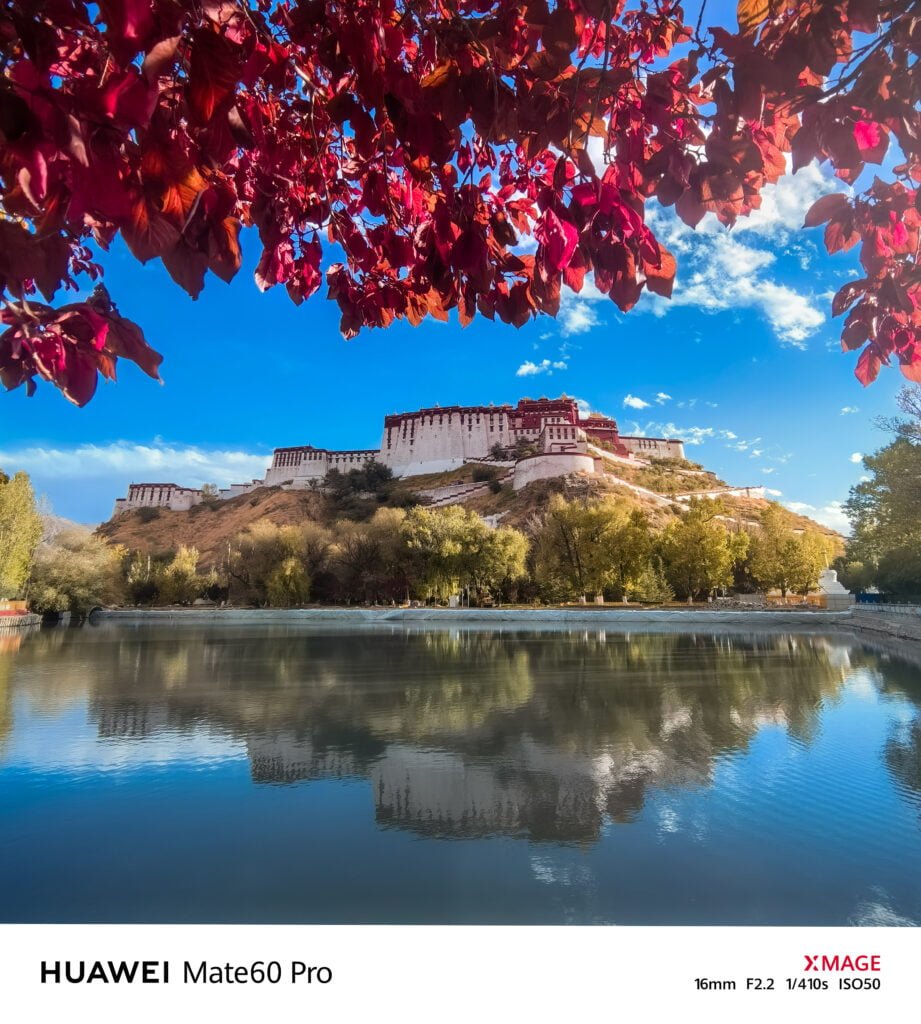
Architectural Marvel on the Island
A three-story temple pavilion graces the island, oriented southward. This sanctuary, with its four-column design, shelters a Maitreya statue, intriguingly crowned with coiled snakes. The hall is encircled by a veranda, with the uppermost level adorned with a hexagonal hall topped by a hexagonal spire roof. The architectural design, supported by traditional interlocking wooden brackets, demonstrates intricate and opulent decorations inside and out, indicative of advanced architectural and artistic prowess. The park is embraced by lush forestry, with ancient willows notably accentuating its landscape. It stands as a beloved leisure spot for Lhasa’s residents.
The Archery Ground of Tsangyang Gyatso: Lukhang
Lukhang’s charm emanates from its tranquil waters. Visiting in spring to witness the “snow lying in the pond” unveils the serene and gentle aura of the Dragon Maiden Temple, nestled amidst the embrace of willow branches, reminiscent of ancient temple tranquility.
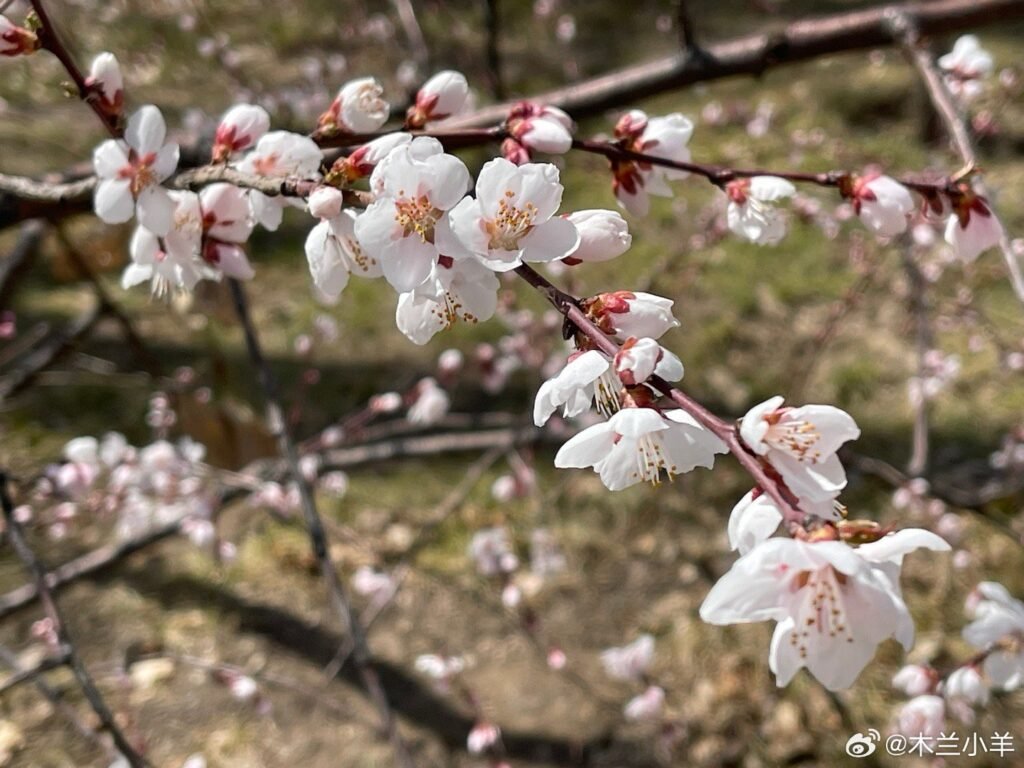
Willow Trees by the Dragon King Pond
Unlike the abundance of willow trees, peach trees are scarce around Dragon King Pond. The drooping willows, traditionally symbols of farewell, cast a melancholic ambiance in the slanting evening sunlight reflected off the water. However, peach blossoms do exist, particularly west of the Dragon Maiden Temple. Lhasa’s peach flowers bloom early, even when shadows still hold snow, and the sunlit areas burst into vibrant, early spring blossoms. From the second or third floor of the Dragon Maiden Temple, one’s gaze can travel from waterside peach blossoms, past ancient willows yet to bud, and over a pond partially covered in snow to the white courtyards of the Lhalu Wetland. This scene, however, belongs to 300 years ago.
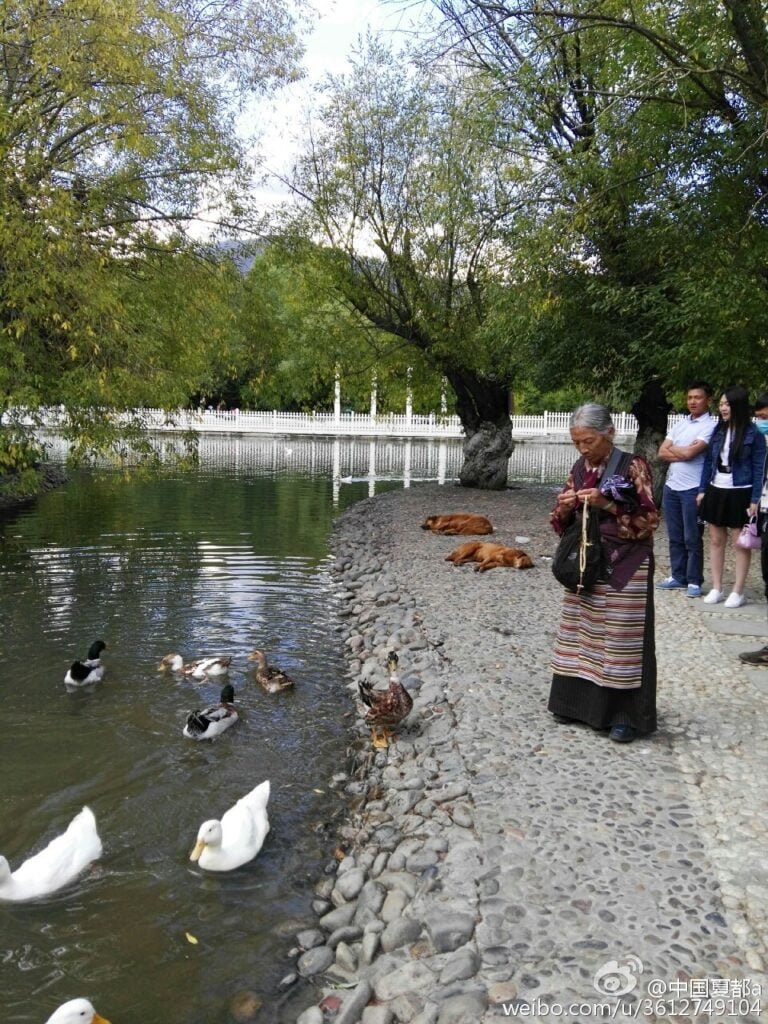
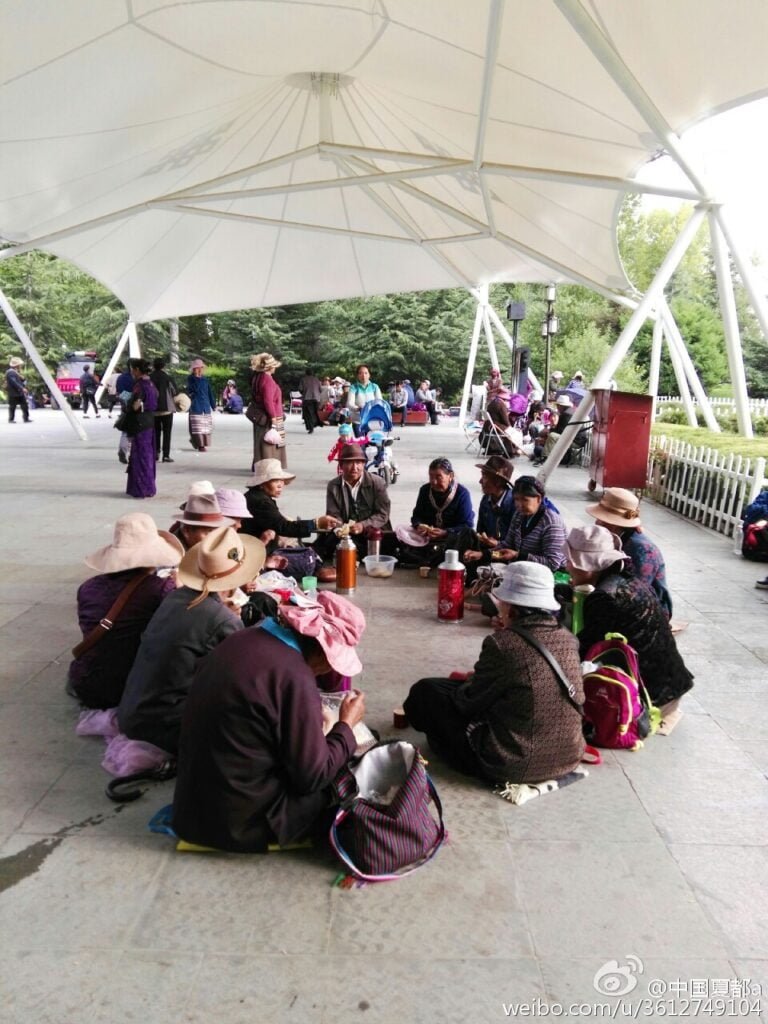
Life of Tsangyang Gyatso: sixth Dalai Lama
In 1702, Tsangyang Gyatso’s fifth year in Lhasa, he heeded to Tashilhunpo Monastery to receive Bhikkhu ordination from Panchen Lobsang Yeshe. However, circumstances en route or upon arrival led him to a profound change of heart. As recorded in “The Autobiography of the Fifth Panchen Lama Lobsang Yeshe: Clearing the Moon’s Bright Conduct,” not only did he abandon his monastic vows, but he also refused to adopt lay attire and take up new vows. Despite pleas for him not to forsake his religious duties, he ultimately did, and this was formally reported to the authorities.
After a 17-day stay at Tashilhunpo Monastery, Tsangyang Gyatso returned to Lhasa and appeared to abandon religious practices altogether. He spent much of his time engaging in archery at Lukhang behind the Potala Palace or drinking and enjoying the view from the pagoda of the Dragon Maiden Temple at the lake’s center.
Many speculate about what Tsangyang Gyatso encountered or contemplated on his journey to Tashilhunpo Monastery that led such a young man, merely 20 years old, to decisively change his life’s course. Regardless of the reasons, for us, the descendants, the interpretations vary: whether they evoke romance, sorrow, or simply an acceptance that things were meant to be this way.
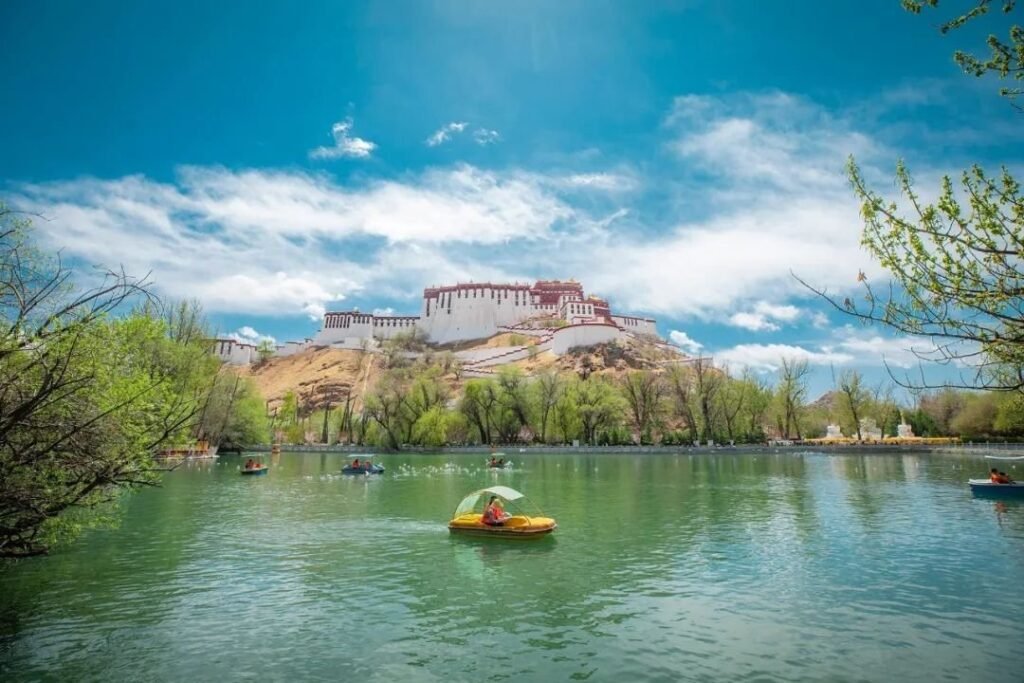
Visiting Tips:
- Outdoor Tea Garden: A popular morning destination, the park’s tea garden attracts many for sweet tea and breakfast following exercise. Favorites include beef pancakes and Tibetan noodles, alongside fast food, varied fried rice, and fried potato strips as snack options.
- Photography Spot: Lukhang Park serves as an excellent vantage point for capturing the Potala Palace’s rear facade and its reflection on the water. Optimal photography times are during the morning and early afternoon.
Lukhang Park offers a peaceful retreat, merging the natural splendor with architectural beauty, providing both locals and tourists with a space to enjoy the serene environment and delve into the historical and cultural depth of Tibet.
